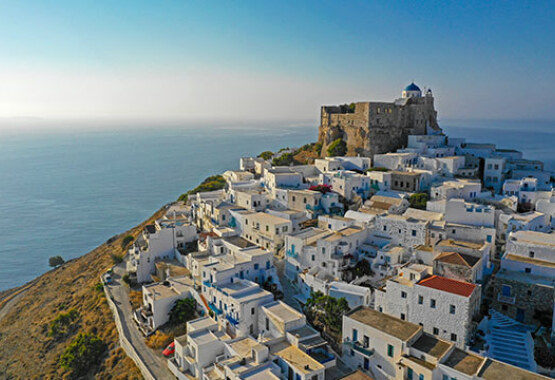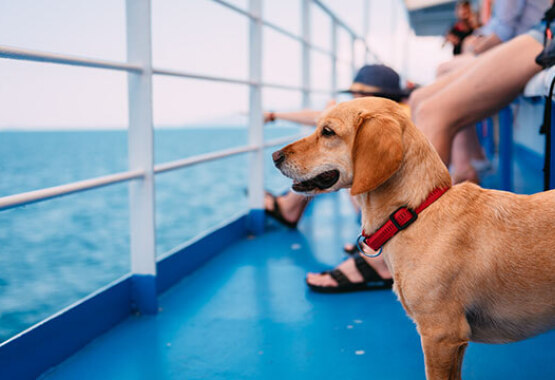EuroVelo Routes in Greece
Cycling undoubtedly offers great pleasure for many people. The sense of freedom that a cycling holiday provides has created a new travel theme in Greece too. The mild weather, Mediterranean scenery, rich history and world-renowned landmarks are major assets for your cycling environmental-friendly holiday. Enjoy the routes by cycling in Greece as they are among the best in the world. Some are demanding because of the hilly terrain, others are less strenuous, but nevertheless beautiful. Even if you are in a competitive mood or simply in need of exploring nature, you will find that Greece has a wonderful countryside in which to pursue your favourite cycling activity.
Throughout the country you will find three EuroVelo Routes, (EV8, EV 11 and EV 13 not realized) waiting for you to discover an alternative holiday. Let’s discover them!
EuroVelo 8
This route begins from Epirus washed by the Ionian Sea, and through Igoumenitsa, Syvota, Parga, Preveza and past historical villages like Zalogo, Souli and Zagori. Continue cycling further south to Astakos, Vonitsa, the National Park of Messolonghi - Aitoliko Lagoons, visit the Acheloos and Evinos rivers delta and Echinades Islands, cross the Antirrio-Rio bridge and enter the Peloponnese and head towards its biggest city, Patras, where one of the biggest carnival parades in the country takes place for the last 180 years or so.
Cycle by the seafront along Xylokastro and Ancient Sykyon to Kiato, towards Corinth and Loutraki, a coastal town known for its thermal springs. Along the coast from Megara to Elefsina (Eleusis) known for the Eleusinian Mysteries, one of the most famous religious events of the ancient times, you will enter Attica and you will pass by the Byzantine Daphni Monastery which is a UNESCO World Heritage Site and complete your journey by visiting the Acropolis in Athens.
Eurovelo 11
You enter the country through Evzonoi town in Central Macedonia where Axios River crosses the valley of Paeonia praised by ancient poets and philosophers for its natural beauty.
Cycle through the wine routes of Goumenissa, a famous wine-making region, producing Appellation of Origin wines, then visit Pella the capital of the ancient Macedonian state and one of the most influential political, economic, and cultural centres of Greece in antiquity. Further on you will reach Thessaloniki which is the second largest city of Greece and the most important urban centre of the north where you will encounter Early Christian and Byzantine (UNESCO) monuments. Built by the sea and washed by the Thermaic Gulf waters, this city is a modern metropolis where a cyclist can enjoy its multi-cultural character, passing by the numerous landmarks of its stormy history.
If you are male, take some time to visit Agion Oros – Mt. Athos (Monastic Community, UNESCO). Moving south to Vergina and the Archaeological Site of Aigai (UNESCO), you can visit the royal Macedonian tombs in the Great Tumulus of Vergina as well as the tomb of King Philip II, on the way to Ancient Pydna and Ancient Dion on the coast of Pieria at the foot of Mt. Olympus.
Further south you will reach the Meteora Monastic Complex (UNESCO) and from there you will head towards the towns of Larisa and Volos. The latter is built at the innermost point of the Pagasetic Gulf, at the foot of Mt. Pelion (or Pilio, the land of the Centaurs). Continue south to Thermopylae where the Battle of Thermopylae was fought between the Greek city-states alliance, led by King Leonidas of Sparta, and the Persian Empire of Xerxes. Cycling through historic sights goes on as you visit Chaeronea, Thebes, Plataies, and Eleusina known for the Eleusinian Mysteries, a famous religious festival of the ancient Greek religion. The route ends in Attica where you will pass by UNESCO World Heritage Sites such as the medieval Daphni Monastery and - last but not least - the Acropolis.
Eurovelo 13
Experiencing the history of Europe's division.Even if the Greek section of the former Iron Curtain Trail is short, you have the opportunity to cycle through the former "Surveillance Area", a highly-militarised area along the Greek-Bulgarian border. During the Cold War, it was forbidden to own land or drive a car in this area and passing through this 25 km wide strip of land was only possible upon presentation of a special military passport.
This route enters Greece from Promachonas border station going through the National Park of Kerkini Lake, Neo Petritsi and Fort Roupel, the largest of a chain of fortifications constructed along the line of the Greek-Bulgarian border known as the Metaxa Line in World War II. Fort Lisse is the last landmark you will see before going through Exochi border station. The route follows the natural boundaries of Rodopi mountains north of Drama, Xanthi and Rodopi areas and enters Greece again in Evros district at Kyprinos municipality along Ardas River. Note that by the river’s banks, close to Kastanies village, a youth festival takes place every summer with music and parallel event in this borderline area.
Eurovelo is a project of the European Cyclists’ Federation (ECF) to develop a network of high-quality cycling routes that connect the whole continent. The routes can be used by long-distance cycle tourists, as well as by local people making daily journeys.




